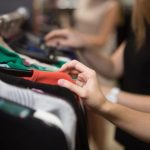
The retail industry is one of the most quickly changing sectors today. Not only must retailers keep up with the latest and greatest emerging technologies, but companies seeking a top competitive edge must also keep a close eye on customer preferences. And as RetailDive contributor Cara Salpini pointed out, these preferences are shifting so much that they're impacting the way established brand images resonate with target audiences.
This year, it's all about keeping pace and getting ahead of these changes. In this way, retailers' 2019 wish lists reflect needs for more robust and meaningful connections with customers, and the ability to deliver for their needs. Let's take a look at what will be top priorities for retailers this year.
A robust customer database to support identification and personalization
For years, consumers have expressed interest in a more personalized shopping experience, tailored for their specific needs. And for the most part, companies have done what they can to answer this call, offering up product recommendations based on purchasing history and other similarly customized options.
However, a recent study from BRP found that these efforts are falling short – while 79 percent of customers noted that personalized service is a top factor when it comes to deciding where to shop, retailers aren't completely successful in delivering this personalization. A surprising 63 percent of brands said they can't identify customers before they check out, and worse still, another 20 percent said they couldn't identify shoppers even after they completed a purchase.
Consumer demands for personalization certainly aren't going to disappear. Retailers will need to update the platforms and processes they use to capture customer data so that it can be leveraged for identification and support a more custom experience. This year, brands will need to put in place a robust customer database that can offer a full, 360-degree view of the customer and his or her individual preferences throughout the shopper lifecycle.
Updated loyalty programs
In addition to making the shopping experience more personal for each customer, brands are also looking to ditch confusing and unclear loyalty programs for something that actually rewards shoppers. As Salpini noted, the days of spending $100 with a company for a measly 10 points – followed by questions about how to use these points – are over.
"Retailers are updating old systems, replacing them and incorporating them into stores in new ways, and it's likely the industry will see more of that in the year to come," Salpini wrote. "Many of the changes appear to finally bring loyalty programs up to customer's expectations."
For instance, big brands like Macy's, Target, Kohl's and Nordstrom have all recently revamped their rewards programs, with many of the changes revolving around access, and making it easier for consumers to make use of rewards without a specific store card. Perks that make shopping with brands easier and more convenient will boost engagement, as well as the overall reach of rewards programs.
This year will bring many changes to the retail sector, and companies must be able to keep up and get ahead of their competition. To find out more about the types of solutions that will make a difference for retailers in 2019, connect with us at SFG today.









